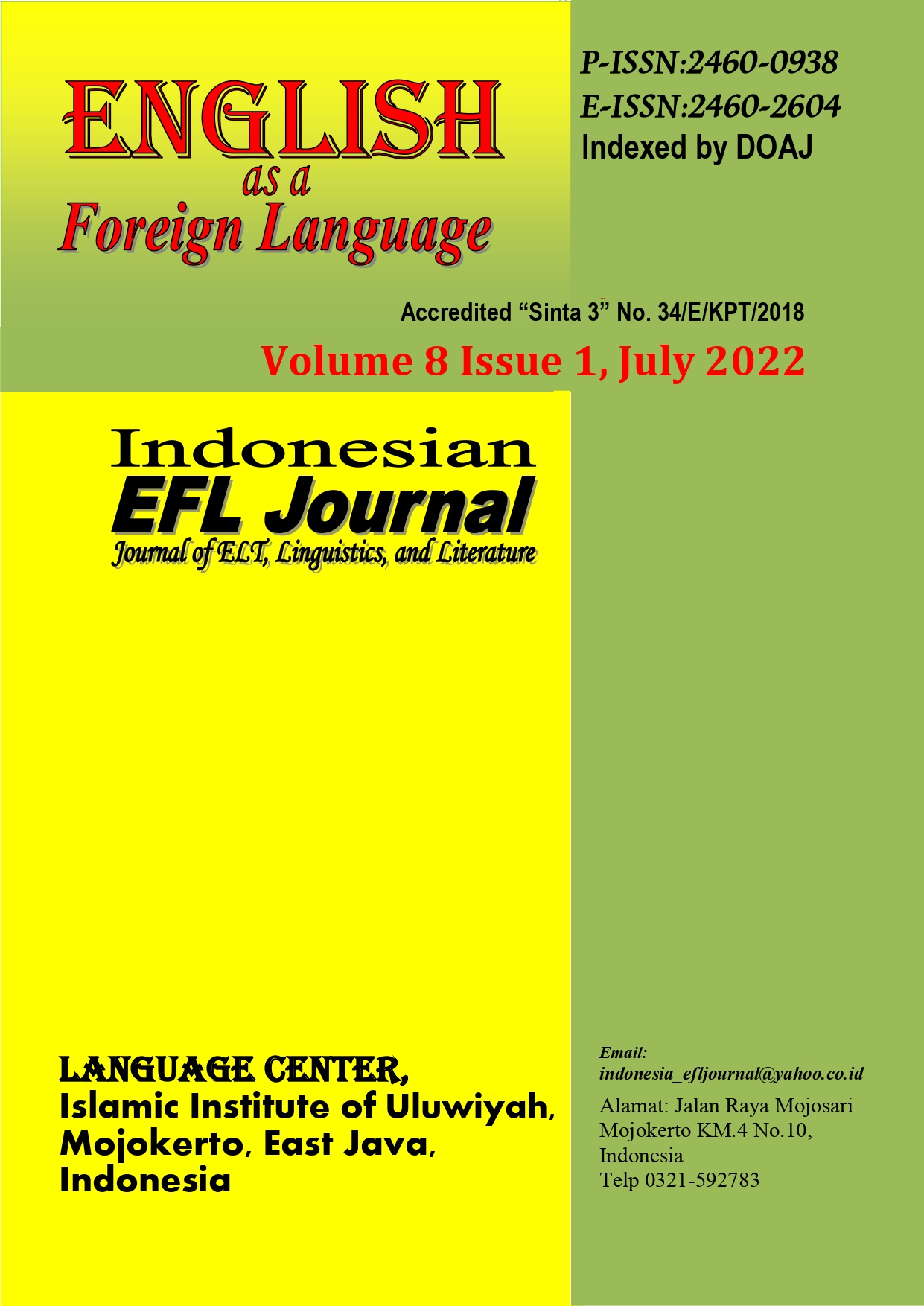Developing Interactive Multimedia for Teaching Personal Pronouns for English Learners of Egypt Islamic Boarding and Course Pare
Abstract
The research objectives were: (1) to discover the needs of the target and the needs of the teaching and learning of the English learners of Egypt Islamic Boarding and Course, and (2) to develop a media for learning English especially in teaching and learning personal pronoun for English learners of Egypt Islamic Boarding and Course. The researcher used R & D as a method. The participants were 4 female and 8 male students who studied English Egypt Islamic Boarding and Course. Lee and Owens Model (2004: 3- 264) were the guidance in developing this media, but the researcher give some modification to develop this. The need analysis was the first step that the researcher did to find out what the participant needs to enjoy in teaching and learning process. It was giving questionnaire to the students and teacher. The basis for developing a material was the result of the needs analysis. The guideline to develop the beginning draft of personal pronoun materials were the course grid that was taken from the need analysis. After the first draft was arranged, the draft was revised by the experts, and they gave the feedback about the draft. And then, the researcher responded the feedback from the experts by revised the feedback. The needs analysis questionnaire and the experts and the feedback from the experts were the instrumentals of the research. The data analyzing of the needs analysis and the judgement of the experts were through statistical data and description of the result of the instruments. The media was conducted by power point application that was modified with the personal pronoun topics. Each unit consists goals, material, and quiz with twenty tasks focusing on personal pronoun. Then try-out media products that have been revised by English learners of Egypt Islamic Boarding and Course. The average value of the percentage of yes amounted to 95% and the percentage does not amount to 5%. This percentage indicates the category can be used without revision. It can be concluded that media products interactive learning on the material of personal pronoun is so practical and interesting that it can be used easily.
References
Brown, H. Douglas. Teaching by Principles in Interactive Approach to Language Pedagogy. California: Prentice Hall Regents Engle Wood Newjersay,19.
Collin, Harper. 1993. Collins Cobuild English Grammar. London: Harper Collins Publisher.
Deliyannis, I. 2002. Interactive Multimedia Systems for Science and Rheology. Ph.D, Ph.D Thesis, University of Wales.
England, E., & Finney E. (2002/2011). Interactive media – what‘s that? who‘s involved? ATSF White Paper—Interactive Media UK. Downloaded from: http://www.atsf.co.uk/atsf/interactive_media.pdf
Harmer, J. 2001. The Practice of English Language Teaching. London: Longman
House, Homer. C. and Susan E. Harman. 1950. English Grammar. Second Edition. New York:Prentice-Hall, Inc.
Ivers, K. S., & Baron, A. E. 2010. Multimedia Project in Education. Santa Barbara: ABC- CLIO.LLC
Lou, C. T. & Khoo C. C. (1991). Teacher, technology and the instructional arsenal. IT Applications in Education, EDUCOMP 91 Proceedings. pp 220-230.
Lee, William W & Owens, Diana L. 2004. Multimedia-Based Instructional Design. San Fransisco: Pfeiffer.
Mulyawati, Y., & Ghani, R. A. (2019). Comparison of IPS Learning Results Using Monopoly Media and Power Point Media. JHSS (Journal of Humanities and Social Studies), 3(2), 86–89.
Neo, M. (2005). Web-enhanced learning: Engaging students in constructivist learning. Campus-WideInformation Systems, 22(1),pp. 4-14.
Person. City University of New York. Retrieved May 22, 2008, from The CUNY http://writesite.cuny.edu/grammar/general/person/.2000
Wulandari, D., Mutmainah, S., Prastyo, H., Fauziah, S., Fachmi, T., Sundari, E., et al. (2022). STREAM DigLIM: Learning Innovation in Madrasah to Develop Students’ Literacy. Proceedings of the International Conference on Madrasah Reform 2021 (ICMR 2021) (hal. 139-146). Dordrecht: Atlantis Press SARL.
Richards, J.C., and Schmidt, R. (2002). Longman Dictionary of Language Teaching and Applied Linguistics (3rd Ed). London: Pearson Education Limited
Richey, R. C., Klein, J. D., & Nelson, W. A. (2004). Developmental Research: Studies of Instructional Design and Development. In D. H. Jonassen (Ed.),
Rudy Hariyono, Complete English Grammar, (Surabaya: Gitamedia Press, 2002), p. 112-114.
Copyright (c) 2022 Indonesian EFL Journal: Journal of ELT, Linguistics, and Literature

This work is licensed under a Creative Commons Attribution-ShareAlike 4.0 International License.
All rights reserved.
this publication may be reproduced, stored in a retrieval system, or transmitted
in any form or by any means, electronic, mechanical, photocopying, recording.




